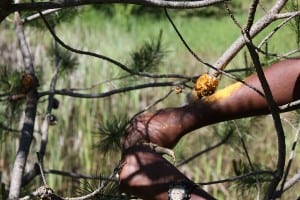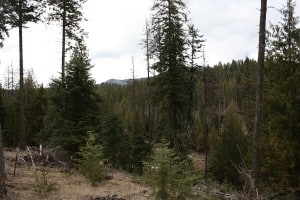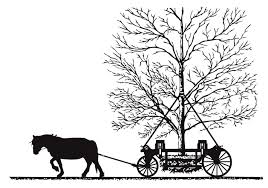Since that article appeared in the Missoulian I attempted to gather basic information from the Gov’s office and the MT DNRC regarding what type of public notice or public process was used to come up with these 5.1 million acres of National Forest land. For days both the Gov’s office and MT DNRC refused to provided the information, and then when they finally said they’d provide basic information, such as “Was there public notice? Were notes taken?” they stonewalled by telling me I’d have to pay them to answer these basic questions. After I told them that as a Montana citizen I have a constitutional right to an “open government” (and after a reporter got involved) they finally sent me 3 pieces of paper.
Many of you may have an interest in the fact that, with zero notice given to the public and with zero notes taken, Gov Bullock’s office hand-picked a total of 7 people who met 5 times on the phone and came up with 5.1 million acres of Montana’s National Forest lands that they have nominated for priority “fast track” logging through a weakened and streamlined “Categorical Exclusion” NEPA process that also significantly reduces meaningful public input.
It’s estimated that this “fast track” logging would apply to 60% to 75% of the forested acres of the Lolo, Bitterroot and Kootenai National Forests outside of designated Wilderness areas, but would include previously unlogged forests and critical wildlife habitat.
It should be noted that with the exception of one of the 7 hand-picked people, all of them are also big supporters (and in some cases the authors) of Senator Tester’s mandated logging bill, the Forest Jobs and Recreation Act.
This whole situation should also lend further evidence to what I’ve been saying for years now, and that’s the fact that not all “collaboration” is created equal, and when it comes to Montana public land and National Forest issues we have some incredibly rotten examples of “collaboration.”
HELENA – Critics of Gov. Steve Bullock’s recent nomination of 5.1 million acres of U.S. Forest Service land as priority for “restoration” say the public was left out of the process.
On April 7, Bullock, a Democrat, announced he submitted a letter to the Forest Service nominating more than 8,000 square miles of timber land from northwestern to southcentral Montana to increase the pace of scale of restoration on federal public land.
Bullock said the lands he nominated under a provision in the recently passed farm bill are declining in health, have a risk of increased tree deaths or pose a risk to public infrastructure or safety.
But critics of Bullock’s recent action said there was no notice of the process and no opportunity for meaningful public input on a plan that could potentially open up the majority of non-wilderness timber lands across the state to fast-track timber harvests.
“I didn’t know anything about this until I read about it in the newspaper,” said Michael Garrity, director of the Alliance for the Wild Rockies.
State forester Bob Harrington, of the Department of Natural Resources and Conservation, acknowledged in an email to the Tribune that the process for choosing the lands Bullock would nominate was not open to the public.
While Harrington, in earlier media reports, couched the process as a “collaboration,” on Monday he said just six people were invited to join an “ad-hoc group” to advise him on identifying priority landscapes national forest lands.
Members selected for the ad-hoc group included Bruce Farling of Montana Trout Unlimited; Barb Cestero of the Greater Yellowstone Coalition; Sanders County Commissioner Carol Brooker; Julia Altemus of the Montana Wood Products Association; Keith Olson of the Montana Logging Association; and Gary Burnett, of the Blackfoot Challenge and Southwest Crown Collaborative.
All participants except for Brooker were involved in drafting and promoting Sen. Jon Tester’s proposed Forest Jobs and Recreation Act.
According to Harrington, the ad hoc group met five times via conference call between Feb. 28 and April 4. Only the Feb. 28 meeting had an agenda, and the meetings were not noticed to the public and no meeting minutes or audio recordings were made.
“They were primarily discussions about the proposed landscape boundaries and focused on a series of maps that were produced along the way, as well as timelines for each of the collaborative groups and/or USFS staff to submit proposed changes to us,” Harrington said in an email.
Matthew Koehler is a longtime Missoula-based forest activist with the nonprofit WildWest Institute. Jake Kreilick, WildWest’s restoration coordinator, is an active member the Lolo Forest Restoration Committee, one of the collaborative groups cited by Bullock in his proposal to the agriculture department.
Koehler pointed out that the agenda for the first ad-hoc conference call, which took place Feb. 28, listed an April 1 deadline for submitting a proposal to the governor “after broader public review/input.”
But the broader public review and input never happened before the governor submitted his letter to the Forest Service, Koehler said.
“What just transpired here is that the governor’s office and the Department of Natural Resources and Conservation hand-selected a group who got together, with no public notice, and over the course of five phone calls they decided that 5.1 million acres of Montana forests should be opened to logging under weakened and streamlined public input processes and limited environmental impact analysis,” Koehler said. “Over the course of five conference calls, seven people came up with 5.1 million acres of fast-track public lands logging. That’s more than a million acres per conference call.”
Bullock’s spokesman, Dave Parker, said there will be future opportunities for the public to weigh in.
[Update: The Billings Gazette newspaper reports that on 4/16/14 Bullock’s spokesman, Dave Parker, “threatened to exclude The Gazette from further advisories from the governor….” – mk]
“This is only the first step in the process, one which ensures vigorous public participation on a project-by-project basis,” Parker said. “The process of designating the landscapes was necessary due to the time frame established by the passage of the farm bill.”
Governors had 60 days from the enactment of the farm bill in February to make their nominations to the Department of Agriculture.
“Governor Bullock is proud to have an incredibly diverse coalition, from the Greater Yellowstone Coalition and Trout Unlimited, to the Wood Products Association and Montana Logging Association, working on this project,” Parker said. “We look forward to creating jobs, restoring the health of our forests and improving habitat for fish and game. We understand that there will be some who instinctively throw rocks at collaboration, which is their right, but they are in the minority.”
Garrity argued that there is no scientific basis for declaring the 5.1 million acres of forest outlined in Bullock’s nomination as “characterized by declining forest health, a risk of substantially increased tree mortality, or an imminent risk to the public infrastructure, health or safety.”
Garrity said the bark beetle epidemic has run its course across much of the state, and that the dead and dying trees that remain in the forest provide important habitat for birds and other native species as well as food sources for grizzly bears — which eat ants and other insects that live in dead trees — and denning habitat for endangered lynx.
“By any ecologist’s definition of what is healthy, these forests are healthy,” Garrity said. “When Teddy Roosevelt decided he wanted to protect our National Forests, he didn’t want them protected just to be tree farms. He wanted to protect them because they are important watersheds for the American public and they provide habitat for native species. Based on that they are healthy forests.”
Koehler estimates that if Bullock’s nomination is approved as it stands now, between 60-75 percent of all the forested acres outside of designated wilderness in the Kootenai and Lolo National Forests would be prioritized for timber harvests under the categorical exclusion provision, which limits the requirement for rigorous environmental analysis.
“What that means is less public involvement, and less analysis about how the timber sale could affect bull trout, or Westslope cutthroat trout, or threatened and endangered species such as the grizzly bear, and lynx, and wolverines,” Koehler said. “Does the public want a say in how their lands are managed, or do they want hand-selected groups meeting secretly behind closed doors undermining America’s public lands legacy and the ability of Americans to fully participate in the management of their public lands?”





